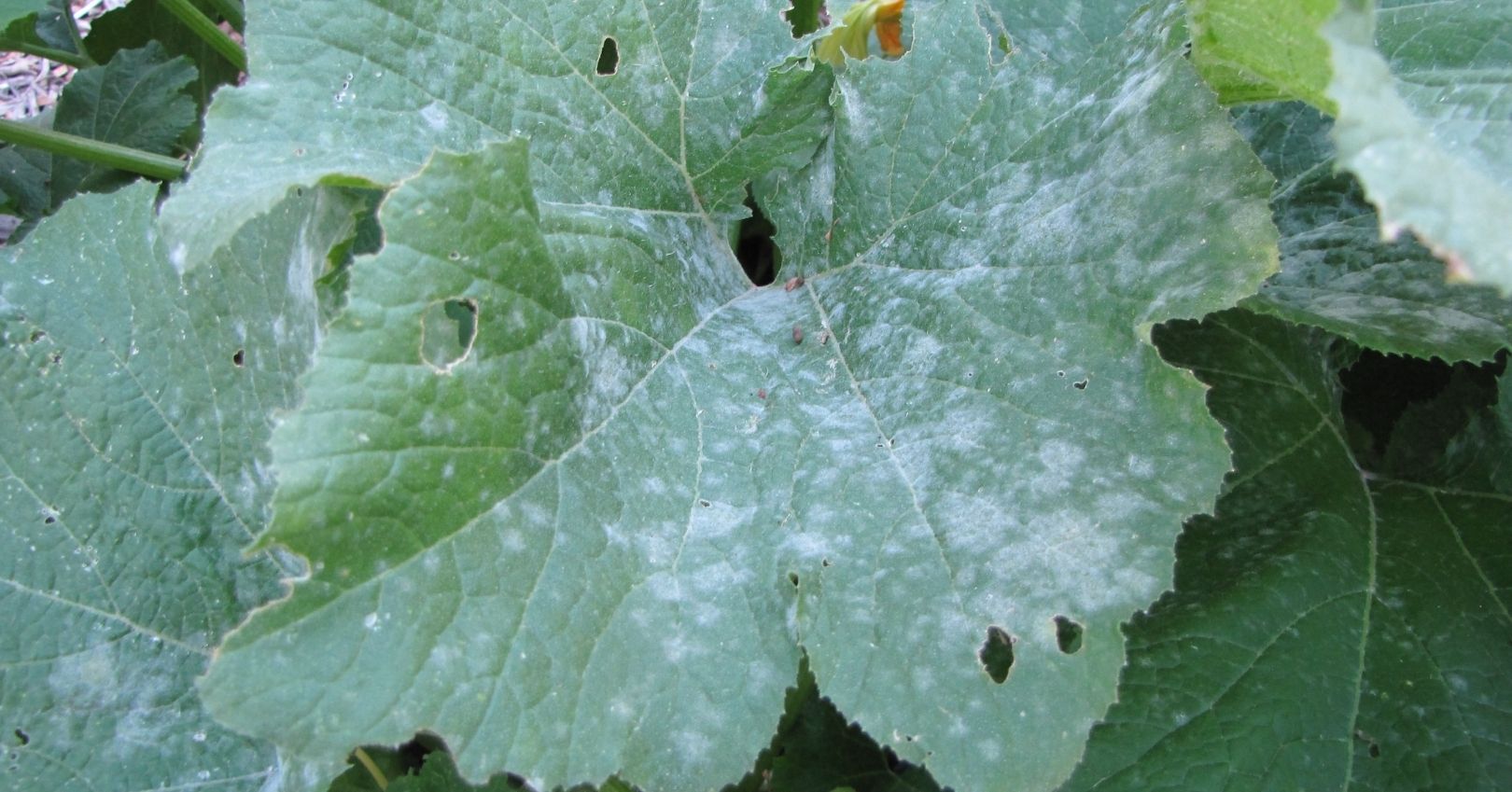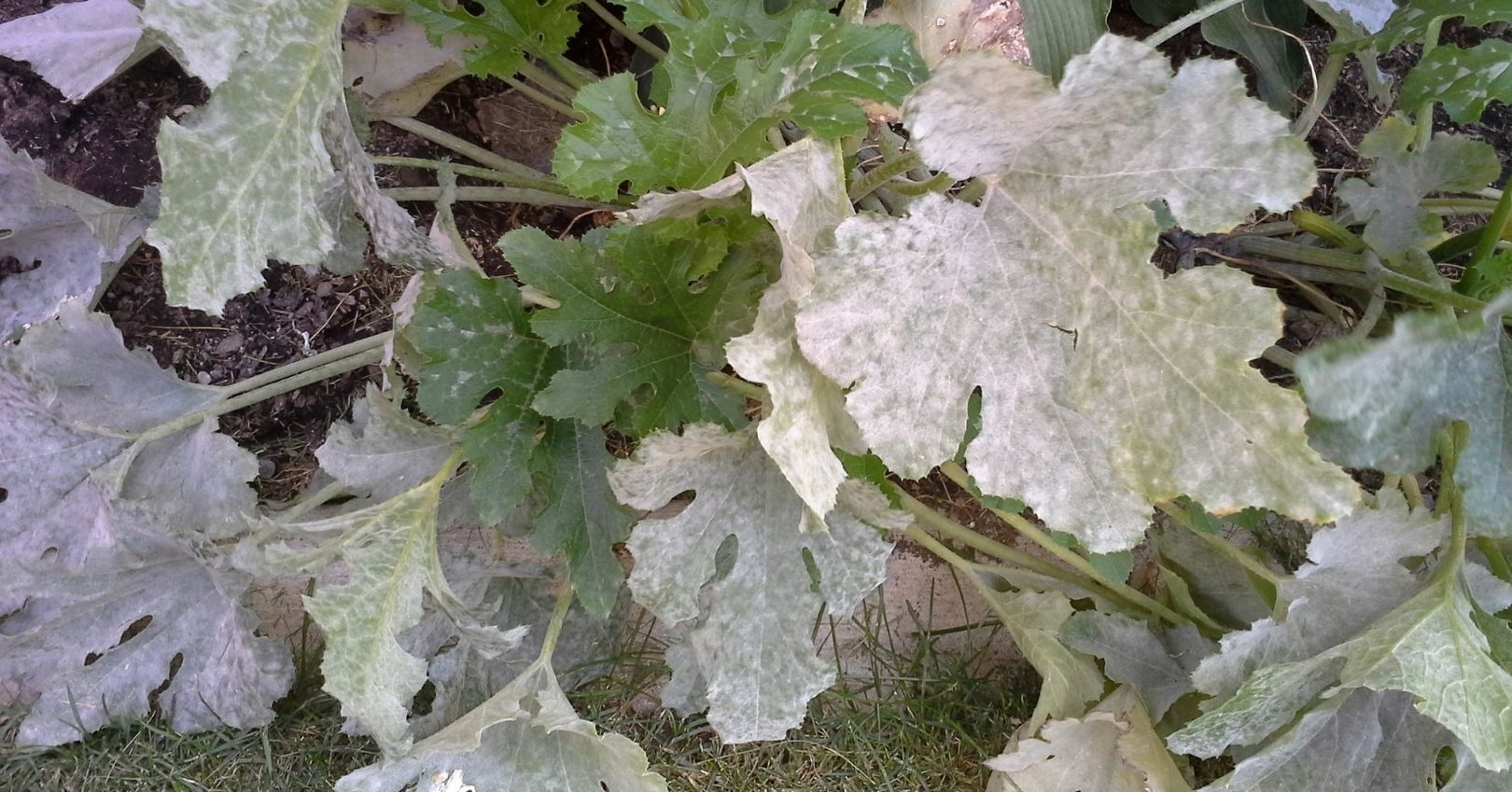Powdery Mildew


Causal Agent
There are two species of fungi that can cause powdery mildew on cucurbits: Podosphaera xanthii and Erysiphe chicoracearum. In Utah, the most common is P. xanthii.
Symptoms
White powdery spots appear on the surface of leaves when temperatures start to increase. Over time, the entire leaf can be covered. The “powder” on leaves is the fungal mycelium and spores.
Disease Cycle
Powdery mildew overwinters in fruiting structures on plant debris. When temperatures warm in late spring, a secondary spore (conidia) forms and blows to leaf tissue to cause infections. In contrast to many fungi, powdery mildew does not thrive with rainfall. The ideal conditions for infection are 2 or more hours of high humidity or dew on host leaves, which often occurs in cucurbit plantings.
After infection, powdery mildew does very well in dry conditions. Infected tissues form more spores that can also be blown in with the wind to infect plants in new locations. The cycle of spore production, dissemination, and infection occurs continually all summer long. When temperatures cool in late summer, the fungus switches from producing conidia to producing fruiting structures that contain the spores for winter survival.
Management
- Monitor. The key to management is to apply fungicides before the disease spreads. Scout fields for new lesions once per week starting in late spring.
- Resistant varieties. Several resistant varieties are available for squash, cucumber, and pumpkin.
- Remove or plow under infected plant material after harvest. This is important to prevent powdery mildew from overwintering.
- Increase plant spacing. This can help reduce powdery mildew severity with better air movement that reduces humidity in the plant canopy.
For chemical control, sulfur products work very well. Apply when the first white spots are observed, and repeat applications every 7-10 days. Once leaves are covered with powdery mildew, chemical control will no longer be effective. Sulfur products cannot be applied above 90°F as this will cause foliar injury.
More Information
Powdery Mildew on Cucurbits

